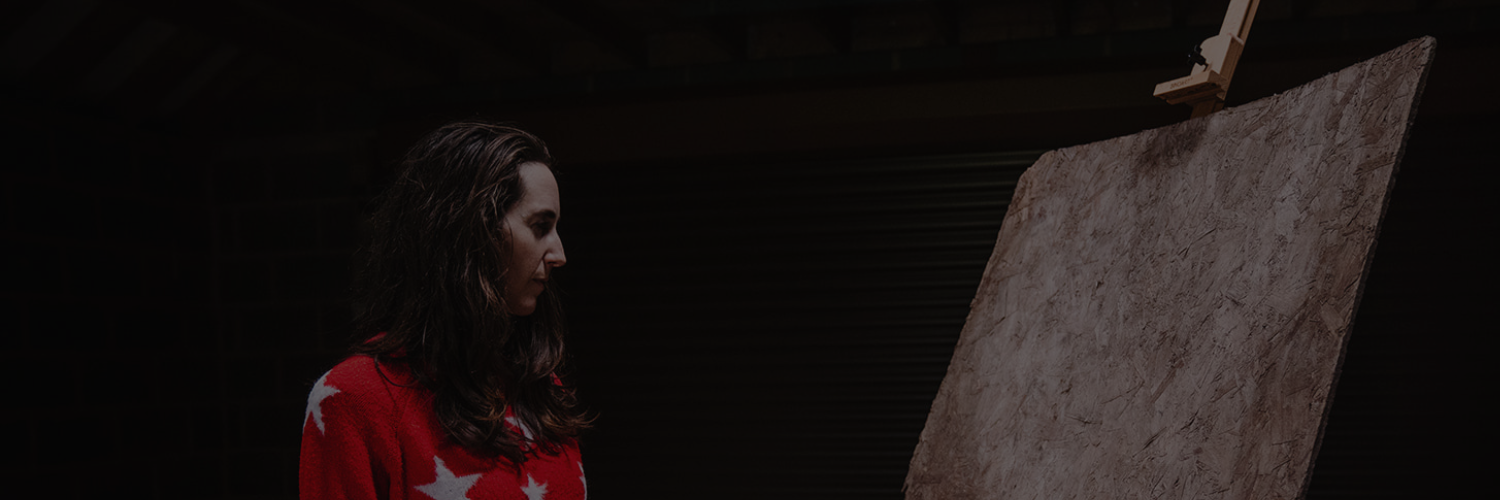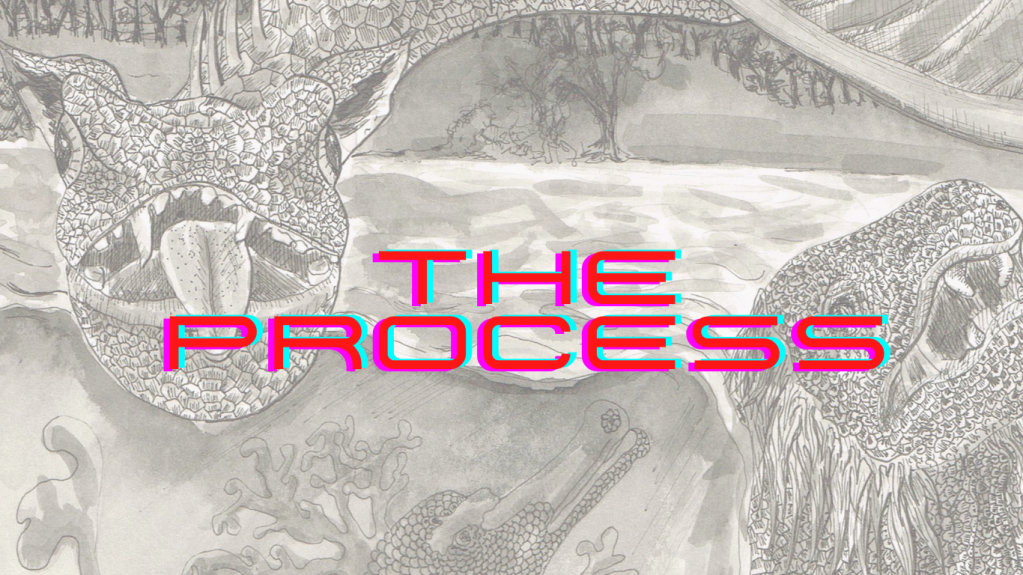In this blog post, you’ll come behind the scenes with me and discover the ideas and inspiration behind ‘The Four Rivers of Eden’ drawing. I’ll also touch on how it was created from a technical perspective. You’ll learn more about the legend behind it, as well as gaining insight into the often frustrating process of pen and ink drawing.

The Inspiration
At present my studio is full of George and The Dragon themed works. The series delves into backstory of the dragon and how it came to be the villain of the legend.
There’s a story that as the Garden of Eden fell the physical Paradise left the earth. It ascended into a spiritual realm, inaccessible to humans. As it ascended the main river of Eden split into four parts. The rivers are named in Genesis 2:10-14 (the first book of the Bible) as Pishon, Gihon, Hiddekel and Phirat.
If you’re interested in the many debates on their new locations I’d recommend chabad.org as a good starting point for mystical interpretations.
My idea here was to conflate the river heads with heads of different dragons, to imagine that this was the point at which the dragon species began to split and adapt. This is entirely routed in my imagination, an artistic exploration of what it means for a species to be extant or extinct in this physical world.

Is there any more perfect depiction of this folk tale than the one dreamt up by Paolo Uccello? I’ve spent many happy hours dreaming in front of this work, sheltering from the London rain in the cosy rooms of the National Gallery. The Uccello dragon appears in many of my drawings, here I referenced him for the snake like dragon.

The Process
One of the best pieces of advice I was given in art school (thank you Heatherleys!) was to use high quality materials. Working on paper that is too light can lead to rips, patching, wavy lines and all those quirks. Sometimes that’s exciting to explore, however, in this instance I wanted to work knowing the support would stand water, ink, aggressive pencil marking and erasure and hard nib pens.

I chose a 300gsm hot pressed paper pre-stretched in a block from Jackson’s. The block format (often used in watercolour) means I can work on a 12×16″ format without needed a 14×18″ board. I take my drawings everywhere with me and work on them when I’m waiting for medical appointments (you can read more about my arrythmia here), or in the ten minute spaces of the day when everyone else is reaching for their phones. Whereas the paintings can be larger scale and deliciously gloopy, the drawings have to be small enough to tuck under one arm quickly.
I’m a firm believer in embracing yourself as you are. I am messy. No matter how hard I try precision eludes me. Embracing this means I start all my ink works in pencil. It enables organic lines that flow where they want. Knowing I can erase it makes me more confident getting started.

Once the design tells the story, I bring in ink. For this I’ve used Winsor & Newton Black Indian Ink. Working with ink washes helps to build dimension and tone. It makes me feel like I’m more immersed in their world. This bit I do in the studio😊.
After splashing on some ink washes and letting the paper dry, I grab a 0.1mm and a 0.05 mm pen. The pens I use are Uni Pin water and fade proof pens. After working with them for a decade I’m happy to report they really are fade proof. It’s crucial that the ink pens are waterproof too, as the washes go on both before and after the detailing in pen.

Myths, magic and folklore are the big inspirations for me. I like to draw creatures that do not exist. An example in this drawing is the scales on the seahorse and the seal style dragon. It’s a playful reminder that the whole drawing is fantasy, despite the figurative approach.
Echoing the ideas explored in my drawing ‘Meeting at the Surface’ it was important that the surface of the water became the divider for the river dragons. Water is used in all my works as the symbol of life.






Once the drawing has tonality from the wash, the details come in. I spent many hours working on the individual dragon scales The background trees are painted in using ink wash, whereas the foreground detail are all drawn in pen. For the underwater dragon/seahorse dragon I worked mainly with the 0.05mm nib and soft washes of diluted ink. The white is the white of the paper where no ink has been applied.

Thank you for reading. We’ve touched on the techniques and materials used and the importance of high quality paper and ink. You’ve also learned a little about the legend of the splitting river that inspired this drawing.
I hope you enjoyed learning more about this artwork. What legends have inspired you lately?
REFERENCE LINKS
Paolo Uccello | Saint George and the Dragon | NG6294 | National Gallery, London
Where Are the Four Rivers that Come from Eden? – Parshah Focus – Parshah (chabad.org)
Heatherley School of Fine Art, London | Heatherley School of Fine Art
Artist Paper & Board Blocks: Jackson’s | Jackson’s Art Supplies (jacksonsart.com)
Pens Pin – uni-ball (uniball.co.uk)
Spotlight on Indian Ink | Winsor & Newton (winsornewton.com)
The Finished Drawing | Charlie Kirkham Website
CHARLIE KIRKHAM NEWSLETTER
Sign up for free and be the first to get notified about updates.






Leave a comment